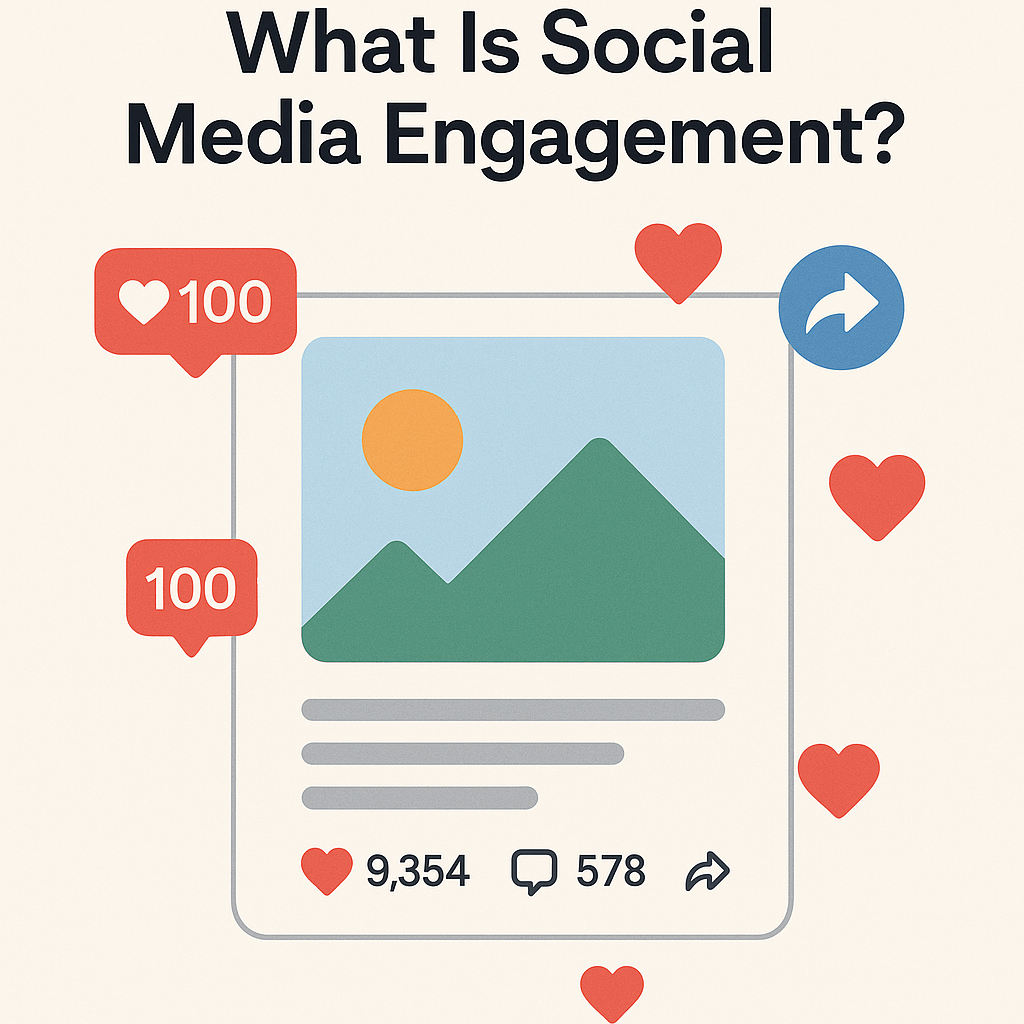This article was assisted with AI. We may include links to partners.
Social media engagement refers to how users interact with your content across platforms like Instagram, LinkedIn, Facebook, Threads, and X (Twitter). Engagement includes actions such as likes, comments, shares, saves, clicks, and mentions — all signals that your audience is paying attention and connecting with what you post.
Engagement is one of the most meaningful indicators of a successful social media strategy. Unlike reach or impressions, it reflects real user interest and participation — not just passive exposure.
Why Social Media Engagement Matters
- Drives visibility: Platforms reward high engagement with greater algorithmic reach.
- Builds community: Interactions foster relationships and brand loyalty.
- Improves trust: Genuine engagement signals credibility to potential customers.
- Guides strategy: Engagement metrics reveal which content types resonate most.
- Supports growth: High engagement leads to higher retention and conversions over time.
How to Measure Engagement
The standard engagement rate formula is:
Engagement Rate = (Total Interactions ÷ Total Impressions or Followers) × 100
This metric helps you compare performance across posts and platforms, regardless of audience size. “Interactions” usually include likes, comments, shares, saves, or clicks — depending on the platform.
Platform-Specific Engagement Metrics
- Instagram: Likes, comments, saves, shares, and Story interactions. Use Instagram Insights for post and account-level rates.
- Facebook: Reactions, comments, shares, and link clicks via Page Insights.
- LinkedIn: Reactions, comments, shares, and clicks. Engagement rate = (Clicks + Likes + Comments + Shares) ÷ Impressions.
- X (Twitter): Likes, replies, retweets, bookmarks, and link clicks. Engagement rate = Total engagements ÷ Impressions.
- Threads: Likes, replies, and reposts — similar to Instagram metrics.
Tracking these consistently allows you to see what resonates most and adjust your content plan accordingly.
What Are Good Baseline Engagement Rates?
Benchmarks vary by platform and audience size, but here are general ranges for healthy engagement:
| Platform | Typical Range (per post) | Strong Performance |
|---|---|---|
| 1–3% | 5%+ | |
| 0.1–0.5% | 1%+ | |
| 1–2% | 3%+ | |
| X (Twitter) | 0.2–0.5% | 1%+ |
| Threads | 1–3% | 4%+ |
Note: Smaller accounts often have higher engagement percentages since followers tend to be more personally connected. As your audience grows, the your engagement rate typically declines, even through your total reach increases.
Key Tactics to Improve Engagement
- Post consistently: Build rhythm and stay visible in feeds.
- Encourage interaction: Use polls, questions, or calls to comment.
- Respond quickly: Show you’re listening — reply to comments and DMs.
- Use visuals effectively: Images and video consistently outperform plain text.
- Experiment with timing: Test posting days and hours for best results.
- Repurpose high-performing posts: Refresh content that already resonates.
Emerging Trends in Measuring Engagement
- AI-driven analytics: New tools help identify why posts perform well, not just how well.
- Generative Engine Optimization (GEO): Engaging posts are more likely to appear in AI-powered search results.
- Cross-platform insights: Integrated dashboards now unify engagement data from multiple networks, making comparison easier for solopreneurs and small teams.
How Engagement Supports Audience Growth
Engagement is the foundation of organic growth. When people interact with your posts, algorithms amplify your reach, and your content appears in more feeds — leading to discovery by new audiences. Over time, this engagement-loop builds brand familiarity, loyalty, and conversion.
Key Takeaways
- Engagement reflects real audience connection, not just reach.
- Use a consistent formula to calculate engagement rates across networks.
- Benchmarks differ by platform — compare like with like.
- Engagement insights drive smarter content strategy and growth.
- Continuous interaction and responsiveness keep your brand visible and trusted.
One simple way to boost your engagement is to share quality posts consistently—that is where Postful helps. Postful is designed to simplify your authoring workflow so you can easily craft and refine posts that resonate with your audience. Try Postful today to simplify your social media strategy.
